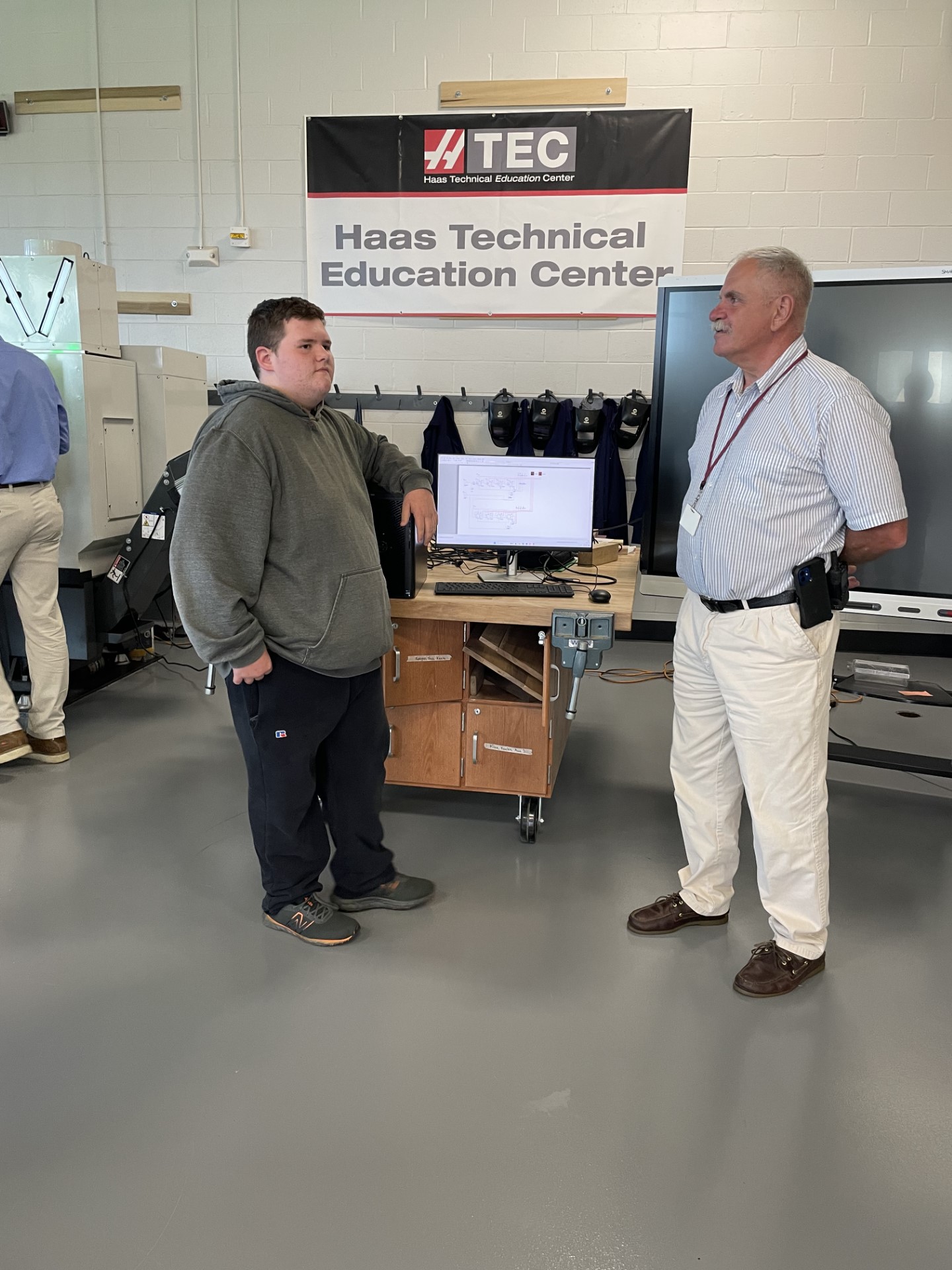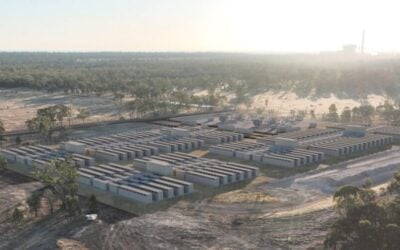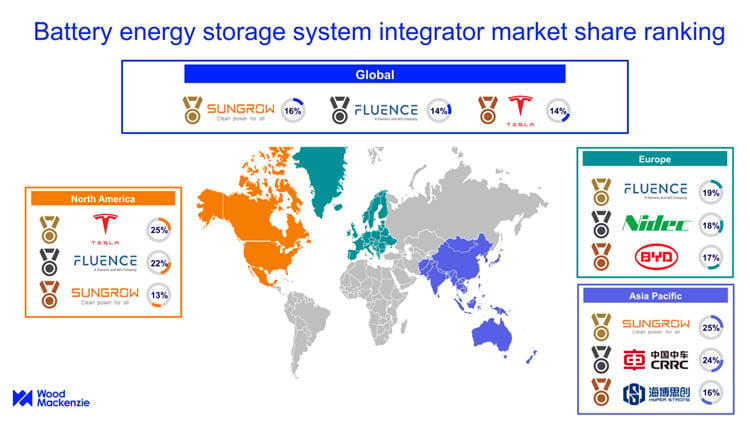Advancements in Thermal Energy Storage and Contribution to Sustainable Development Goals
Executive Summary
The US-based startup Fourth Power has secured $20 million in Series A Plus funding to commercialize a novel thermal energy storage system. This development represents a significant step towards achieving several United Nations Sustainable Development Goals (SDGs), particularly SDG 7 (Affordable and Clean Energy), SDG 9 (Industry, Innovation, and Infrastructure), and SDG 13 (Climate Action). The technology aims to provide a cost-effective, long-duration energy storage solution essential for a global transition to renewable energy sources.
Technological Innovation and Project Status
Fourth Power’s system is a thermal battery designed to overcome the limitations of existing energy storage technologies like pumped hydropower and lithium-ion batteries. The recent funding will facilitate the commissioning of a 1 MWh-e demonstration unit, the final step before commercial deployment.
- Core Technology: The system uses electricity from renewable sources to heat carbon blocks to extreme temperatures (up to 2400°C).
- Heat Transfer: Molten tin is utilized as a highly efficient liquid metal heat transfer medium.
- Power Generation: A proprietary system converts the stored heat back into electricity on demand.
- Development Milestone: The new capital supports the integration of full-scale commercial components and the expansion of supplier and customer partnerships.
Alignment with SDG 7: Affordable and Clean Energy
The Fourth Power system directly addresses the core targets of SDG 7 by facilitating access to affordable, reliable, and sustainable modern energy. Its design focuses on overcoming the economic and technical barriers associated with high renewable energy penetration on the grid.
- Affordability: The technology targets a system cost of less than $25/kWh-e, which is projected to be up to ten times cheaper than conventional lithium-ion batteries. This cost reduction is achieved by using abundant and inexpensive materials like carbon and tin, making clean energy more economically viable.
- Reliability and Sustainability: The system provides long-duration storage, scalable from 5 to over 100 hours. This capability is critical for ensuring grid stability and reliability by smoothing the intermittency of solar and wind power, thereby increasing the share of renewable energy in the global energy mix.
Impact on SDG 9, 11, 12, and 13
The project’s impact extends across multiple interconnected SDGs, fostering innovation, building sustainable infrastructure, and providing a direct tool for climate action.
- SDG 9 (Industry, Innovation, and Infrastructure): The technology is a prime example of deep-tech innovation applied to a critical infrastructure challenge. Investment from firms like DCVC and Breakthrough Energy Ventures underscores its role in advancing industrial capacity for the clean energy transition.
- SDG 11 (Sustainable Cities and Communities): By enabling a stable and clean power grid, this technology is foundational for developing sustainable cities that can rely on renewable energy, reducing urban pollution and enhancing energy resilience.
- SDG 12 (Responsible Consumption and Production): The use of readily available materials like tin and carbon promotes more sustainable production patterns compared to the resource-intensive supply chains of other battery technologies, which often rely on critical minerals like lithium and cobalt.
- SDG 13 (Climate Action): Long-duration energy storage is a key enabling technology for decarbonizing the electricity sector. By storing excess renewable energy for later use, the system facilitates the displacement of fossil fuel power plants, leading to a direct reduction in greenhouse gas emissions.
Conclusion: The Role of Strategic Partnerships (SDG 17)
The successful funding round, spearheaded by Munich Re Ventures and supported by existing investors, exemplifies SDG 17 (Partnerships for the Goals). This collaboration between a technology startup and strategic venture capital firms mobilizes the financial resources and expertise necessary to scale up climate solutions. Such partnerships are essential for accelerating the development and deployment of technologies that can drive the global energy transition and achieve long-term sustainability objectives.
Analysis of Sustainable Development Goals (SDGs) in the Article
1. Which SDGs are addressed or connected to the issues highlighted in the article?
-
SDG 7: Affordable and Clean Energy
The article’s central theme is the development of a new, cheaper, and long-duration energy storage system. This technology is crucial for ensuring a stable and reliable supply of energy from renewable sources like wind and solar, directly contributing to making clean energy more accessible and affordable.
-
SDG 9: Industry, Innovation, and Infrastructure
The article focuses on a technology startup, Fourth Power, which has secured significant venture capital funding ($20 million) to innovate and commercialize a new thermal energy storage system. This highlights investment in research, development, and building resilient infrastructure to support a clean energy grid.
-
SDG 13: Climate Action
The entire context of the article is the “renewable energy transition” as a “solution to the climate crisis.” By enabling greater integration of renewable energy and reducing reliance on fossil fuels, the technology discussed is a direct measure to combat climate change and its impacts.
-
SDG 12: Responsible Consumption and Production
The article emphasizes that Fourth Power’s system is “10 times cheaper than lithium-ion batteries” because it uses “readily available and less expensive materials” like tin and carbon. This focus on material efficiency and moving away from resource-intensive materials like lithium aligns with the goal of sustainable management and efficient use of natural resources.
2. What specific targets under those SDGs can be identified based on the article’s content?
-
SDG 7: Affordable and Clean Energy
- Target 7.2: By 2030, increase substantially the share of renewable energy in the global energy mix. The article states that long-duration storage systems are needed to “smooth out the bumps in a grid fully saturated with wind, solar, and other renewable energy resources,” directly supporting the increased use of renewables.
- Target 7.b: By 2030, expand infrastructure and upgrade technology for supplying modern and sustainable energy services. The development and funding of Fourth Power’s advanced thermal storage system is a clear example of upgrading technology to support a modern, renewables-based energy infrastructure.
-
SDG 9: Industry, Innovation, and Infrastructure
- Target 9.4: By 2030, upgrade infrastructure and retrofit industries to make them sustainable, with increased resource-use efficiency and greater adoption of clean and environmentally sound technologies. The article describes a new, clean technology that improves energy infrastructure and uses materials more efficiently than existing battery technologies.
- Target 9.5: Enhance scientific research, upgrade the technological capabilities of industrial sectors…encouraging innovation and…increasing…private research and development spending. The article details how Fourth Power secured $20 million in private funding from firms like DCVC and Breakthrough Energy Ventures to advance its technology, and how the company “doubled the size of its team, including its engineering staff.”
-
SDG 13: Climate Action
- Target 13.2: Integrate climate change measures into national policies, strategies and planning. While the article notes a challenging federal policy environment, it highlights that investors and the private sector are still pushing forward with climate solutions. The actions of venture capital firms investing in clean technology represent a de facto integration of climate change considerations into their financial strategies.
-
SDG 12: Responsible Consumption and Production
- Target 12.2: By 2030, achieve the sustainable management and efficient use of natural resources. The article highlights that the system’s low cost is due to “supply chain savings” and the use of “readily available and less expensive materials” (tin and carbon), which represents a more efficient and sustainable use of resources compared to lithium-ion batteries.
3. Are there any indicators mentioned or implied in the article that can be used to measure progress towards the identified targets?
-
For SDG 7 (Affordable and Clean Energy)
- Investment in clean energy technology: The article quantifies the investment with figures like “$19 million in Series A funding” and another “$20 million in Series A Plus funding.” This serves as an indicator for financial flows towards upgrading sustainable energy technology (Target 7.b).
- Technological capacity: The development of a “1 MWh-e demonstration” unit and a system scalable up to “100+ hours of storage” are concrete indicators of technological advancement and capacity building for clean energy infrastructure (Target 7.b).
-
For SDG 9 (Industry, Innovation, and Infrastructure)
- Private R&D spending: The $20 million raised from venture capital firms is a direct indicator of private investment in research and development (Target 9.5).
- R&D personnel: The statement that the company “doubled the size of its team, including its engineering staff” is an indicator of an increase in the number of research and development workers (Target 9.5).
-
For SDG 13 (Climate Action)
- Private sector climate strategy: The investment from firms like Breakthrough Energy Ventures and Munich Re Ventures, which specializes in risk management, implies that the private financial sector is actively investing in climate mitigation technologies, regardless of federal policy. This can be seen as an indicator of the integration of climate measures into business and investment strategies (Target 13.2).
-
For SDG 12 (Responsible Consumption and Production)
- Material and cost efficiency: The specific cost metric of “less than $25/kWh-e” and the claim of being “ten times cheaper than lithium-ion batteries” are quantitative indicators of resource-use efficiency (Target 12.2).
- Material choice: The explicit mention of using “readily available” materials like “tin-and-carbon” instead of lithium is a qualitative indicator of moving towards more sustainable management of natural resources (Target 12.2).
4. Summary Table of SDGs, Targets, and Indicators
| SDGs | Targets | Indicators Identified in the Article |
|---|---|---|
| SDG 7: Affordable and Clean Energy | 7.2: Increase the share of renewable energy. 7.b: Expand infrastructure and upgrade technology for sustainable energy. |
– Development of storage to support a grid “fully saturated with wind, solar”. – $20 million in new private investment for clean energy technology. – Creation of a “1 MWh-e demonstration” unit with “100+ hours” of storage capacity. |
| SDG 9: Industry, Innovation, and Infrastructure | 9.4: Upgrade infrastructure and adopt clean technologies. 9.5: Enhance research, encourage innovation, and increase R&D spending. |
– Development of a new thermal energy storage system. – $20 million in private R&D funding from venture capital. – Company “doubled the size of its team, including its engineering staff.” |
| SDG 13: Climate Action | 13.2: Integrate climate change measures into policies and planning. | – Private sector investment in “solutions to the climate crisis” despite federal policy shifts, indicating integration of climate action into business strategy. |
| SDG 12: Responsible Consumption and Production | 12.2: Achieve the sustainable management and efficient use of natural resources. | – System cost of “less than $25/kWh-e,” which is “ten times cheaper than lithium-ion batteries.” – Use of “readily available and less expensive materials” like tin and carbon instead of lithium. |
Source: cleantechnica.com







